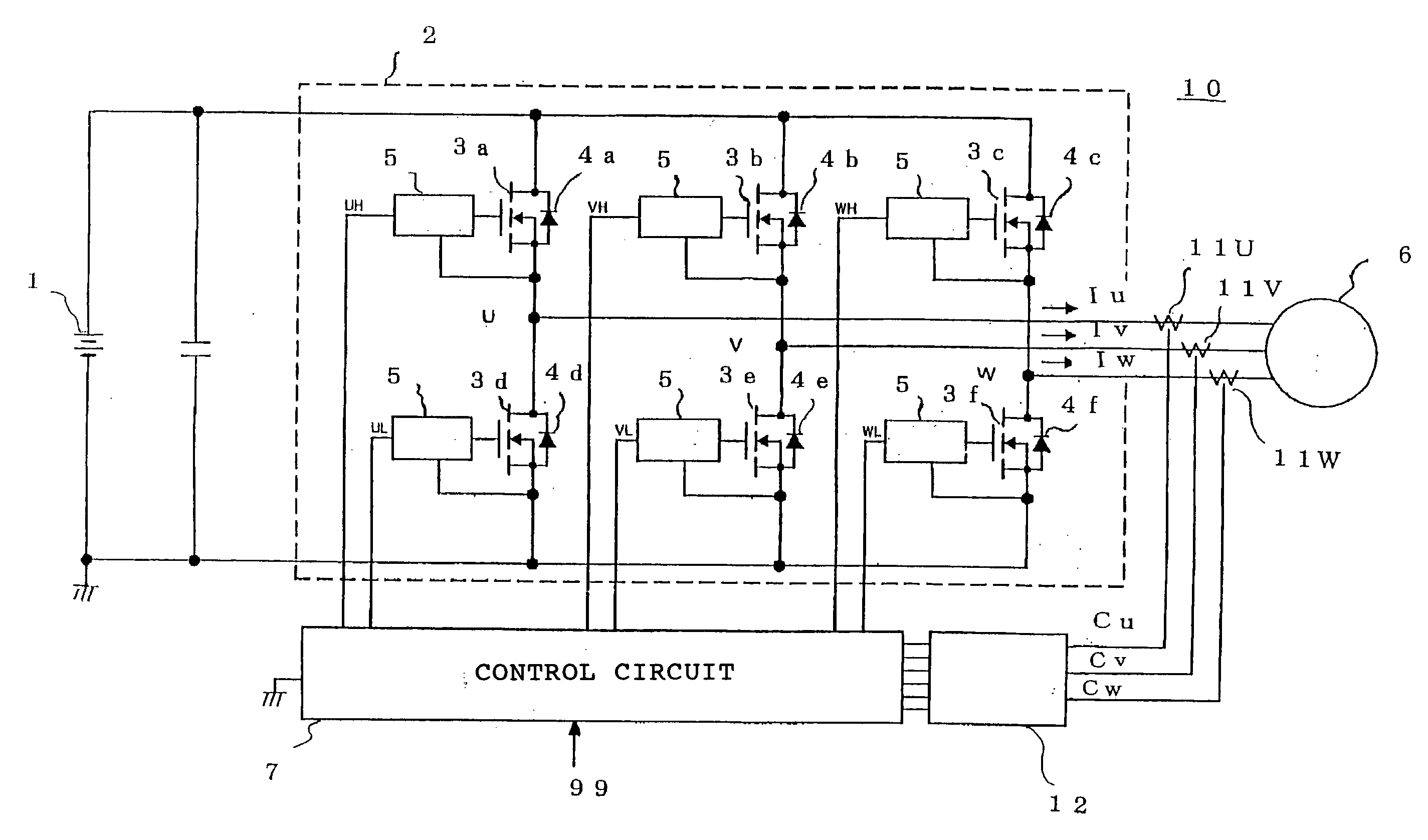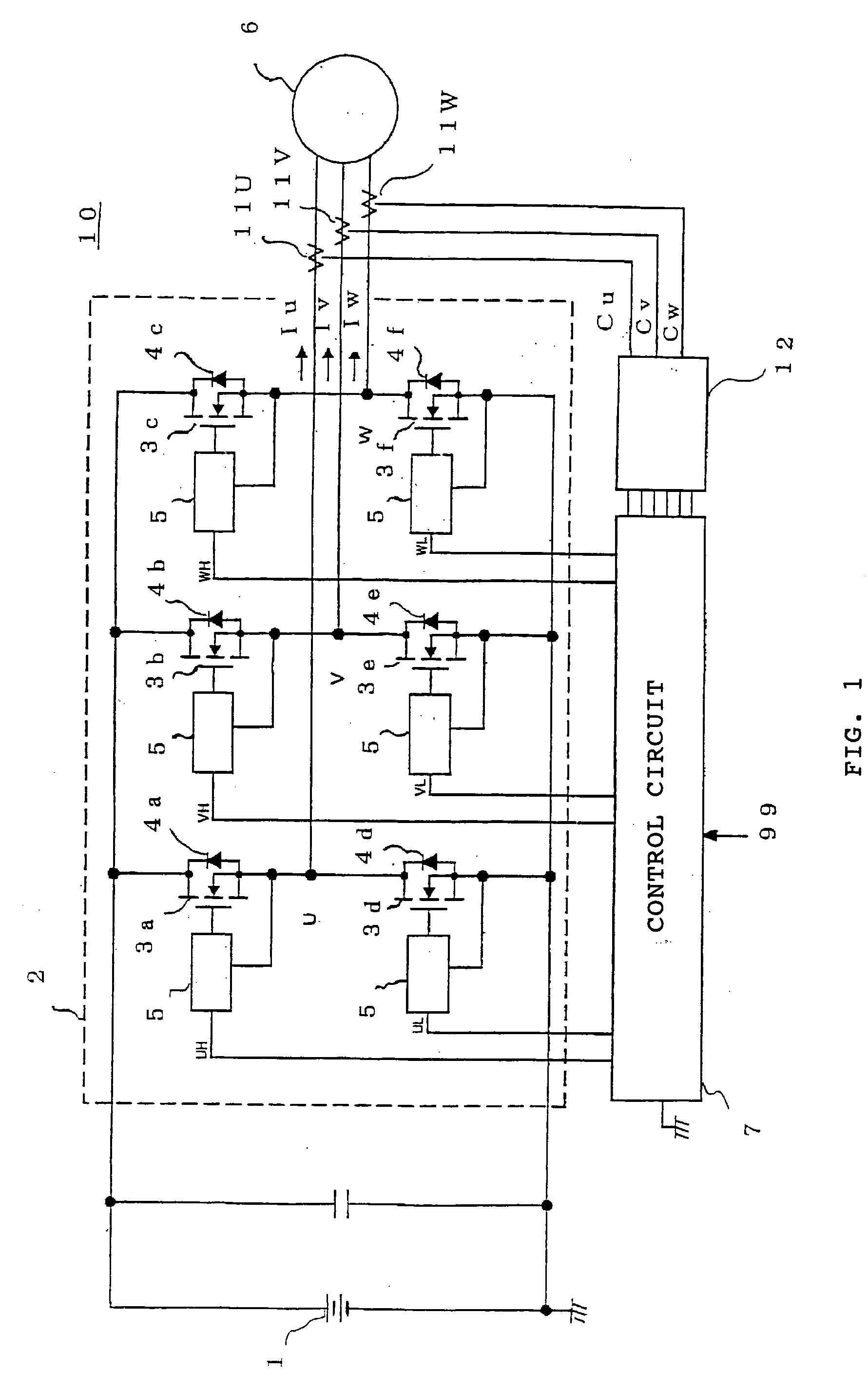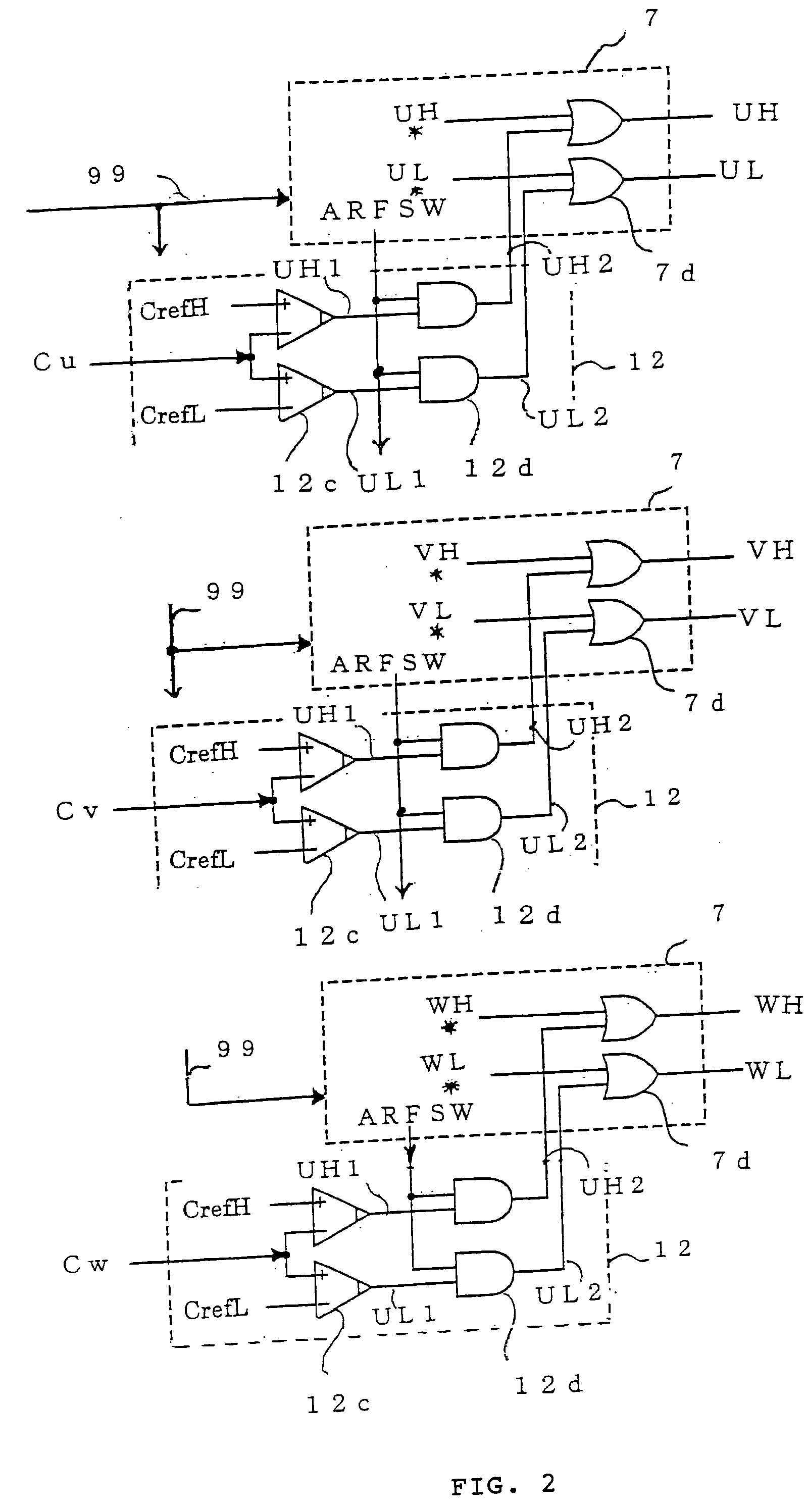Power conversion device
a power conversion device and power conversion technology, applied in the direction of dc-ac conversion without reversal, semiconductor lasers, etc., can solve the problems of power conversion device out of order, power conversion device functions are restricted, diode element temperature exceeds, etc., to achieve high power generation efficiency and small amount of hea
- Summary
- Abstract
- Description
- Claims
- Application Information
AI Technical Summary
Benefits of technology
Problems solved by technology
Method used
Image
Examples
embodiment 1
[0024] A schematic diagram of the entire arrangement of a power conversion device according to a first preferred embodiment of the present invention is shown in FIG. 1. Positive (+) and negative (−) terminals of a DC power supply 1 are connected to a power conversion section 2 of a power conversion device 10. The power conversion section 2 includes three switching elements 3a, 3b, 3c that are connected to the positive terminal of the DC power supply 1 (for example, a MOS-type transistor having an ON resistance of several mΩ) and three switching elements 3d, 3e, 3f that are likewise connected to the negative terminal of the DC power supply. To these six switching elements 3a, 3b, 3c, 3d, 3e, 3f, diode elements (hereinafter, merely referred to as diodes) 4a, 4b, 4c, 4d, 4e are connected in parallel respectively. For convenience of the description, a part formed of the switching elements 3a, 3b, 3c, 3d, 3e, 3f is hereinafter referred to as a first power conversion section. A part forme...
embodiment 2
[0043] In the foregoing first embodiment, three phases of current sensors 11 are provided as shown in FIG. 1. As shown in FIG. 4, however, on the supposition of mounting only any two phases of current sensors out of U, V and W phases, a current value of the remaining one phase (instantaneous value) can be calculated by simple operation. FIG. 4 shows the entire arrangement of a power conversion device in this sense. Hereinafter, in the drawings, same reference numerals as those in FIGS. 1, 2 and 3 indicate the same or like parts, and detailed descriptions thereof are omitted.
[0044]FIG. 4 shows the case where current sensors 11 are mounted on two lines of U phase and V phase to detect currents of these two phases, and a current of W phase is obtained by the operation of currents of these two phases (it is referred to as current operation circuit).
[0045]FIG. 5 shows the arrangement of a synchronous rectifier gate signal generation circuit 22 of FIG. 4. The synchronous rectifier gate ...
embodiment 3
[0047] Various types of current sensors 11 are employed for use in vehicles. In some cases where a zero-point voltage output from a current sensor is poor in the aspect of precision (drift of a DC component occurs) as is the case of current sensors employing, for example, a Hall element, ideal output signals from a current sensor can be obtained so as to obtain accurately a direction of phase currents by AC coupling of output signals from the current sensor to interrupt a DC drift component. FIG. 6 shows a synchronous rectifier gate signal generation circuit 23 arranged to perform such an advantage.
[0048]FIG. 6 shows an example in which the arrangement according to this third embodiment is applied to the one of FIG. 5 according to the foregoing second embodiment in order to facilitate further understanding. In the drawing, an adding inverting circuit 22a, a comparator 22c, an AND gate 22d and the like are the same as those in FIG. 5, so that further description thereof is omitted. ...
PUM
 Login to View More
Login to View More Abstract
Description
Claims
Application Information
 Login to View More
Login to View More - R&D
- Intellectual Property
- Life Sciences
- Materials
- Tech Scout
- Unparalleled Data Quality
- Higher Quality Content
- 60% Fewer Hallucinations
Browse by: Latest US Patents, China's latest patents, Technical Efficacy Thesaurus, Application Domain, Technology Topic, Popular Technical Reports.
© 2025 PatSnap. All rights reserved.Legal|Privacy policy|Modern Slavery Act Transparency Statement|Sitemap|About US| Contact US: help@patsnap.com



